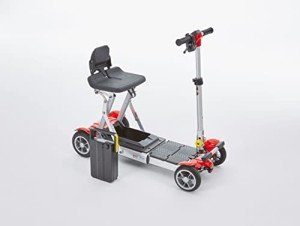Understanding Mobility Aids: Enhancing Independence and Quality of Life
As society continues to age and people progressively seek ways to preserve self-reliance, the demand for mobility aids has never ever been more significant. Mobility aids, which incorporate a variety of devices created to help individuals with strolling or walking around, play an important role in promoting mobility, improving safety, and enhancing general quality of life. This post will check out the various types of mobility aids, their benefits, considerations for choice, and address some frequently asked questions.
Types of Mobility Aids
Different mobility aids are readily available, each developed to address specific requirements. The following table sums up some of the most typical kinds of mobility aids and their functions.
| Type of Mobility Aid | Description | Best Suited For | Key Features |
|---|---|---|---|
| Walking sticks | A portable stick offering assistance and balance. | People who require minimal assistance. | Light-weight, portable, adjustable height. |
| Walkers | Four-legged frames offering stability. | Those requiring significant assistance while walking. | Foldable, some with wheels, included security functions. |
| Rollators | Wheeled walkers with a seat for resting. | Individuals needing mobility with the option to rest. | Brakes, baskets for personal products, adjustable height. |
| Wheelchairs | Chairs with wheels for people with minimal mobility. | Those unable to walk or requiring substantial assistance. | Manual or powered options, personalized seating. |
| Scooters | Motorized devices for bigger distances. | Individuals with restricted stamina but needing self-reliance. | Various sizes and styles, typically portable. |
| Crutches | Assistance devices put under the arms or forearms. | Individuals recovering from lower limb injuries. | Adjustable, lightweight, needs upper body strength. |
| Stairlifts | Mechanical devices for moving in between floors. | Users dealing with challenges in multi-level homes. | Adjustable for various staircases, automated. |
Benefits of Mobility Aids
Mobility aids supply a range of benefits that can significantly enhance the lives of individuals dealing with mobility challenges. Some notable benefits consist of:
- Increased Independence: Mobility aids empower people to move freely without depending on others for help, consequently improving their confidence and self-esteem.
- Boosted Safety: Using mobility aids can reduce the danger of falls and injuries, specifically for older adults or those with balance issues.
- Improved Quality of Life: By helping with mobility, people can engage in social activities, attend occasions, and delight in life more fully, adding to much better psychological and mental health.
- Rehab Support: After surgery or injury, mobility aids supply necessary support and stability, assisting in healing and rehab procedures.
- Accessibility: Many mobility aids are developed to be used both indoors and outdoors, making sure that people can browse different environments with ease.
Elements to Consider When Choosing Mobility Aids
Picking the proper mobility help requires cautious consideration of several elements, including:
| Factor | Considerations |
|---|---|
| User's Needs | Evaluate the level of mobility needed; consider whether the user needs short-lived or long-lasting support. |
| Physical Limitations | Assess the user's strength, balance, and coordination to identify the very best kind of aid. |
| Setting | Think about the primary environments where the help will be utilized, such as home, outdoors, or particular terrains. |
| Weight and Portability | Ensure that the picked gadget is manageable regarding transportability and storage, especially for outside use. |
| Budget plan | Mobility aids come in a series of costs; consider insurance protection and available funding alternatives. |
| Adjustability | Pick aids that can be changed for height and convenience to accommodate growth or altering requirements. |
Regularly Asked Questions About Mobility Aids
1. How do I understand if I require a mobility help?
Lots of aspects can indicate the requirement for a mobility help, such as problem strolling or balancing, fatigue while standing, or a current surgical treatment impacting mobility. Consulting with a healthcare professional can provide assistance customized to individual requirements.
2. What types of mobility aids are covered by insurance?
Protection differs between insurers, however most supply alternatives for long lasting medical equipment, which normally includes wheelchairs, walkers, and some types of walking canes. Consult your insurance provider for particular coverage info.
3. Can mobility aids be utilized outdoors?
Yes, lots of contemporary mobility aids are designed for outdoor usage. Rollators, scooters, and some walkers are geared up with features for stability and ease of use on various terrain.
4. How do I maintain my mobility help?
Regular maintenance involves examining for any wear and tear, making sure that parts such as wheels, brakes, and frames are functioning properly, and cleaning the devices as required. Following lightweight folding electric scooters is crucial for safety.
5. Is there a risk of ending up being based on mobility aids?
While some users may become reliant on mobility aids, they are created to promote independence and mobility. Slowly utilizing a mobility aid can enhance confidence and assistance retain physical strength and coordination.
Mobility aids are invaluable tools that empower people to conquer physical obstacles, promoting self-reliance and enhancing quality of life. By comprehending the various kinds of mobility aids available, their benefits, and essential factors for factor to consider, families and caregivers can make informed choices that best fulfill the needs of their loved ones. With the ideal support, those with mobility difficulties can lead satisfying and active lives, totally free to check out the world around them.

